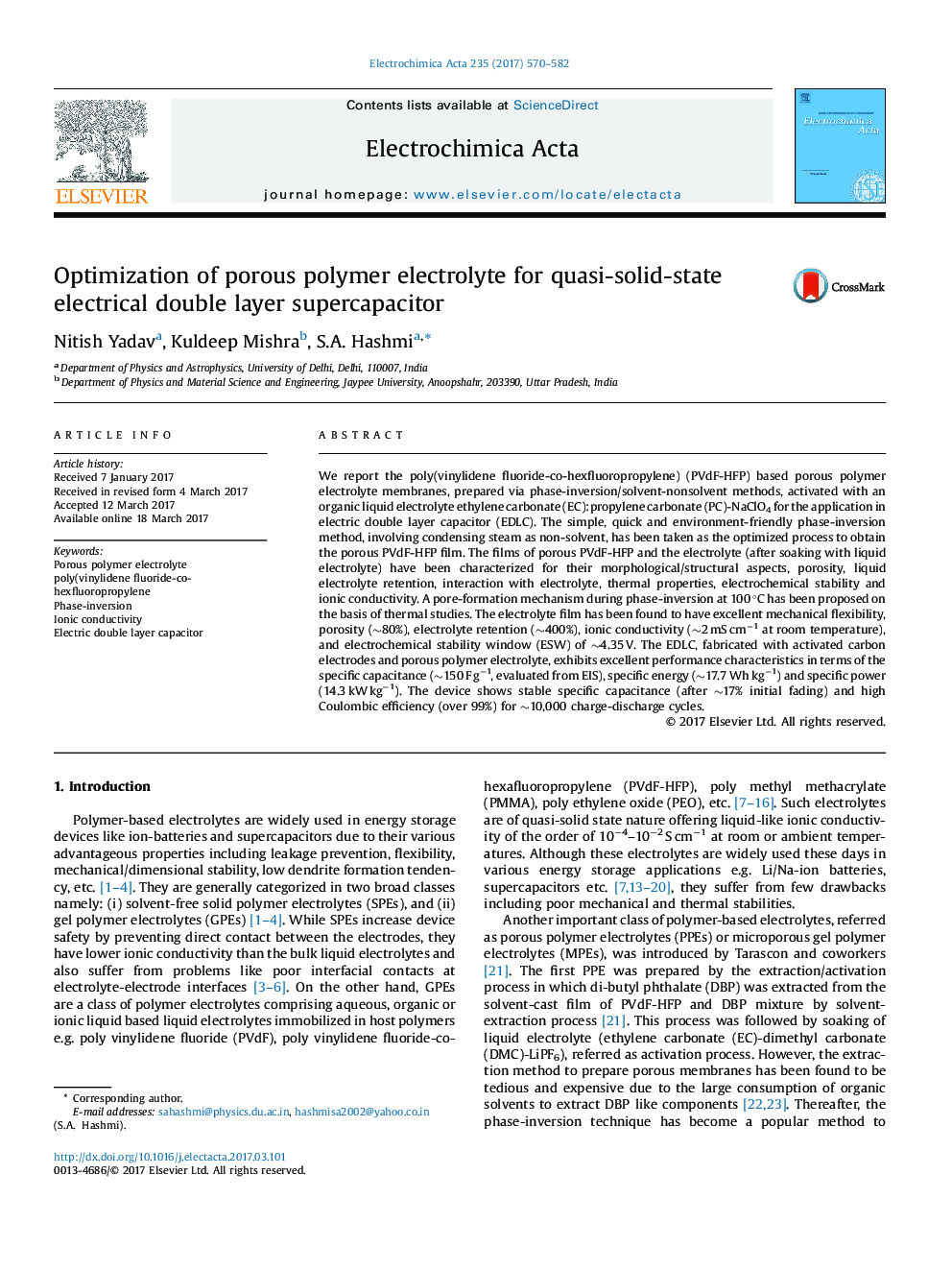| Article ID | Journal | Published Year | Pages | File Type |
|---|---|---|---|---|
| 6471696 | Electrochimica Acta | 2017 | 13 Pages |
â¢A PVdF-HFP and EC-PC-NaClO4 based porous polymer electrolyte (PPE) is prepared using a simple phase-inversion method.â¢A mechanism is proposed for pore-formation using TGA and DSC.â¢PPE shows excellent flexibility and high ionic-conductivity, suitable as electrolyte for EDLCs.â¢Activated carbon based EDLC with PPE offers capacitance â¼130-150 F gâ1, efficient enough to glow LED.
We report the poly(vinylidene fluoride-co-hexfluoropropylene) (PVdF-HFP) based porous polymer electrolyte membranes, prepared via phase-inversion/solvent-nonsolvent methods, activated with an organic liquid electrolyte ethylene carbonate (EC):propylene carbonate (PC)-NaClO4 for the application in electric double layer capacitor (EDLC). The simple, quick and environment-friendly phase-inversion method, involving condensing steam as non-solvent, has been taken as the optimized process to obtain the porous PVdF-HFP film. The films of porous PVdF-HFP and the electrolyte (after soaking with liquid electrolyte) have been characterized for their morphological/structural aspects, porosity, liquid electrolyte retention, interaction with electrolyte, thermal properties, electrochemical stability and ionic conductivity. A pore-formation mechanism during phase-inversion at 100 °C has been proposed on the basis of thermal studies. The electrolyte film has been found to have excellent mechanical flexibility, porosity (â¼80%), electrolyte retention (â¼400%), ionic conductivity (â¼2 mS cmâ1 at room temperature), and electrochemical stability window (ESW) of â¼4.35 V. The EDLC, fabricated with activated carbon electrodes and porous polymer electrolyte, exhibits excellent performance characteristics in terms of the specific capacitance (â¼150 F gâ1, evaluated from EIS), specific energy (â¼17.7 Wh kgâ1) and specific power (14.3 kW kgâ1). The device shows stable specific capacitance (after â¼17% initial fading) and high Coulombic efficiency (over 99%) for â¼10,000 charge-discharge cycles.
Graphical abstractDownload high-res image (176KB)Download full-size image
